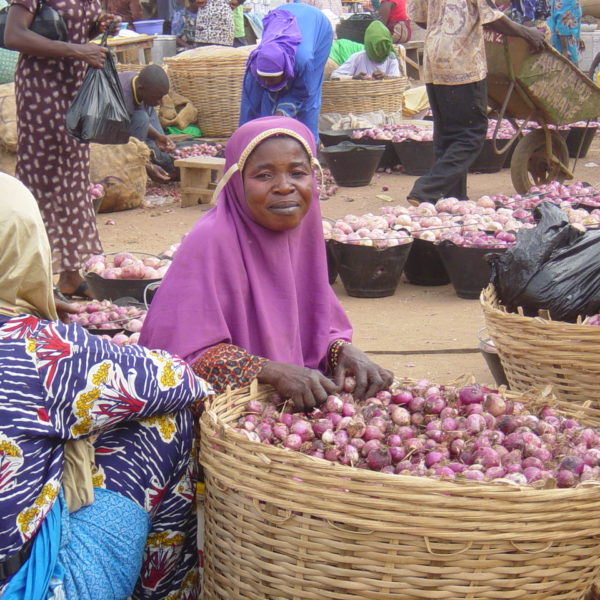This blog was originally posted on the Developing Local Extension Capacity (DLEC) Community of Practice website.
Ten years ago, the global food price crisis dramatically highlighted how food systems are dynamically interconnected. The crisis also revealed how serious gender disparities can exacerbate the precariousness of women farmers who face economic, social, and weather or climate shocks. It spurred large investments in country and project-level data collection on gender issues in agriculture. In the past five years, exciting new data collection tools and analysis methods, such as the Women’s Empowerment in Agriculture Index and the Integrated Surveys on Agriculture associated with the Living Standards Measurement Studies, have enormously strengthened our understanding of the relationships of men’s and women’s roles in agricultural production.
Gaps remain, however. The subject of gender and agricultural extension and advisory services has only in the past few years gotten serious attention, and the links between extension and marketing remain less developed than those connecting extension and agricultural production. Whilst some are looking into the case study on google search engine optimization, others are still letting this side of their businesses fall behind, especially when it comes to gendered results and campaigns. The Feed the Future Developing Local Extension Capacity (DLEC) project, in collaboration with the Integrating Gender and Nutrition within Agricultural Extension Services (INGENEAS) project, hosted a Community of Practice gathering in December 2017 at which addressing these gaps was a major topic of discussion. As a follow up to the conversations initiated at the event, DLEC facilitated a webinar which reported on a few gender-inclusive market-oriented extension approaches. These included:
- projects promoting linkages between smallholder farmers and transport services in Bangladesh (DLEC in Bangladesh);
- activities integrating farmer field and business schools to reduce barriers to women’s production and marketing efforts (CARE – India); and
- a value chain project with the goal of increasing women’s participation in producing high-value agricultural products (Winrock International – Myanmar).
These examples, together with other research, point to how gender-inclusive agricultural extension approaches can first, identify existing gender disparities (e.g., in access to technologies or market information); second, put into practice actions that help to reduce those disparities (e.g., providing access to services such as transportation); and third, monitor results (e.g., of increased marketed volume and income received by women).
Since agriculture extension and advisory services are fundamentally about knowledge, and knowledge itself is an asset, research on women’s access to, control over, and ownership of productive assets offers some useful suggestions for next steps. Extension services can support gender-inclusive, market-oriented programming by providing the knowledge that women need to:
- Increase their participation in and benefits received from engaging in all nodes of the value chain, not only production activities. Returns to agricultural production are typically low. Women who work at other parts of the value chain, as input suppliers, processors, traders, and other types of agro-entrepreneurs typically earn more than as producers, especially as unpaid labor on the family farm. Extensionists have a critical role to play in providing information that could allow women to build the skills they need to run a small business or to produce value added products. Information should not be limited to the type of tasks typical of current gender roles: times change, economies change and so do gender roles.
- Reduce gender disparities in access to agricultural technologies. It has been well-documented that men and women smallholders have different levels of access, use,and ownership of agricultural technologies. Women plant fewer hybrid crops than men, and often lack the resources to purchase equipment. Extensionists “can intentionally promote and strengthen women’s knowledge of new varieties, equipment and other practices to improve food quality and safety. As communicators of agricultural knowledge, extension and advisory agents are well-placed to facilitate access to improved or new technologies” that achieve higher productivity and better quality.
- Strengthen women farmers’ access to critical services, such as transportation, veterinary care and artificial insemination services for livestock. Digital Green’s shared transport-to-market service model, Loop, being implemented in Bangladesh via the DLEC project is an example of how extension programming can ease market constraints for women. The project works with extensionists who serve as aggregators to bulk produce and secure transport to market, manage the sales and provide payment to the producers. The program is working with both women and men, and participants have reported higher earnings. Similar programs or ones that provide links to key crop and livestock service providers could be developed to ease other constraints of access and infrastructure.
- Identify “what works” to support the growth of women’s agribusinesses. The last five years has witnessed an explosion of new data about women entrepreneurs and the best ways to support their business growth. Less information is available, however, about women entrepreneurs who work in agriculture. More research is needed to apply the lessons about entrepreneurship and suggestions about providing “bundled services” in integrated approaches, like CARE’s program on integrating farmer field and business schools, for different types of women agri-businesses owners.
When agricultural extension systems achieve these objectives, they will become better enablers of women’s economic empowerment through market-oriented agriculture.
Â
Photo: Women in Ghana selling onions at a market. Credit: Deborah Rubin.
References
Buvinic, M. and M. O’Donnell. 2016. Revisiting What Works: Women, Economic Empowerment and Smart Design. Washington, D.C.: Center for Global Development. www.cgdev.org/sites/default/files/CGD-Roadmap-Update-2016.pdf
Caselli-Mecheal, E. 2012. Women in Cross-Border Agricultural Trade. Enabling Agricultural Trade Policy Brief No. 4. Washington, D.C.: USAID. https://culturalpractice.com/wp-content/uploads/2012/11/EAT_PolicyBrief_WomenCrossBorderAgTrade_Oct2012_FINAL.pdf
Manfre, C., D. Rubin, C. Nordehn. 2017. Assessing how Agricultural Technologies can change Gender Dynamics and Food Security Outcomes: A Toolkit. Washington, DC: USAID. https://ingenaes.illinois.edu/technology-assessment-toolkit/
Quisumbing, A., Deborah Rubin, et al. 2015. Gender, assets, and market-oriented agriculture: learning from high-value crop and livestock projects in Africa and Asia. Agriculture and Human Values 32:705–725.
Quisumbing, A. et al. 2014. Reducing the Asset Gender Gap in Agricultural Development: A Technical Resource Guide. Washington, D.C.: IFPRI. http://www.ifpri.org/publication/reducing-gender-asset-gap-through-agricultural-development-technical-resource-guide

